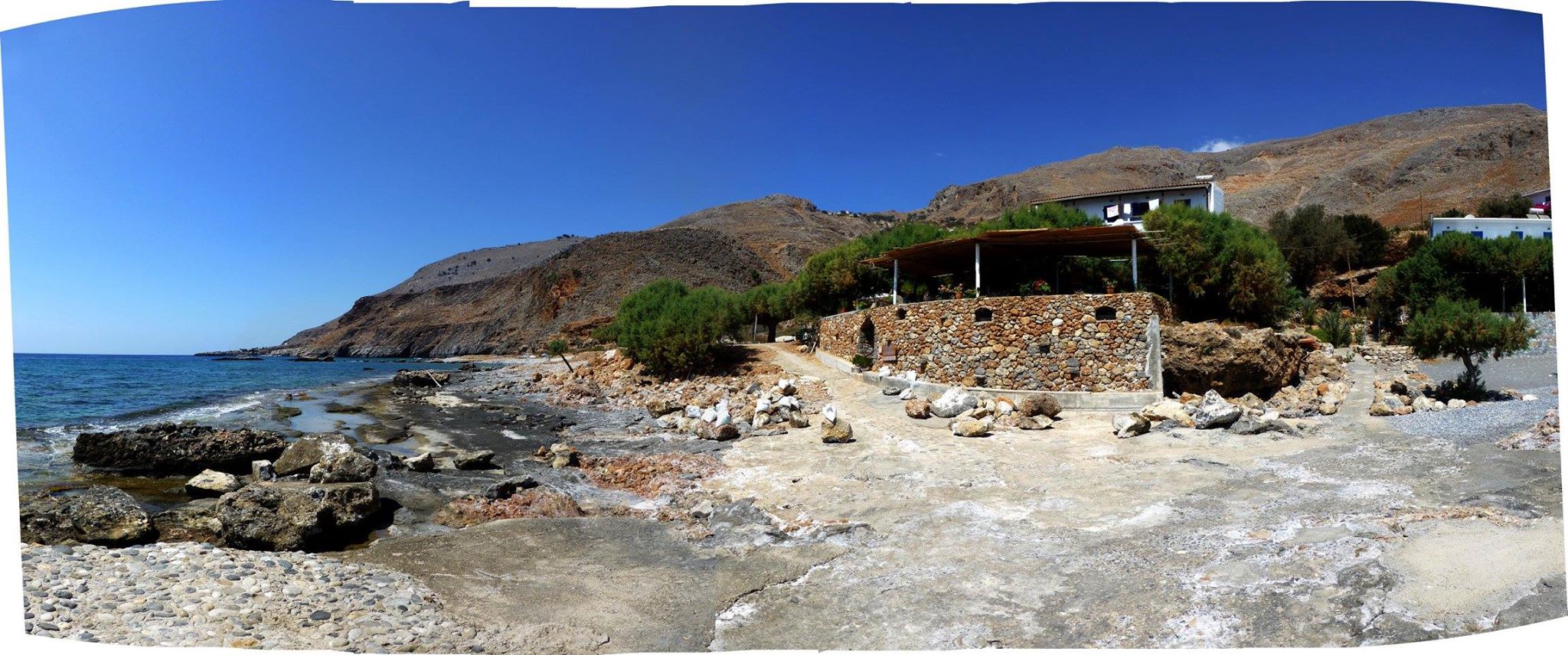Guantánamo: Im Herz der Finsternis | ZEIT ONLINE.
Seit 13 Jahren ist Mohamedou Ould Slahi in Guantánamo: Sein erschütternder Bericht über seine Leidenszeit erscheint jetzt weltweit – er schildert Gewalt und Lebensmut.

Ein Zellentrakt von Guantánamo | © Mark Wilson/Reuters
Duisburg, warum in aller Welt ausgerechnet Duisburg? Der Name der Stadt wirkt wie eine absurde Laune in der finsteren Geschichte, die Mohamedou Ould Slahi erzählt. In Duisburg lebte er bis 1999 – und seit August 2002 in Guantánamo, bis zum heutigen Tag. Als Gefangener Nr. 760 schrieb er 2005 in der Isolationszelle seinen Bericht, handschriftlich auf Papier, in englischer Sprache, die er zuvor gelernt hatte. Nach vielen juristischen Auseinandersetzungen ist das Buch jetzt in einer von den amerikanischen Behörden zensierten Fassung erschienen. Vieles ist geschwärzt, Namen, Begriffe, Absätze, manchmal mehrere Seiten; allerdings gelingt es dem Herausgeber Larry Siems meist, in Fußnoten zu rekonstruieren, was sich hinter den schwarzen Balken verbirgt. Die Welt des Lagers wird sichtbar – und auch der treueste Amerikafreund dürfte ins Grübeln kommen, ob von der dort gegebenen Antwort des Westens auf den Terror – nämlich Entwürdigung des Feindes – eine Linie führt zu den Pariser Morden vor zwei Wochen.
Slahis Fall ist nicht unbekannt; es gibt zugängliche Protokolle diverser amerikanischer Untersuchungskommissionen, es gibt Presseartikel, der Spiegel berichtete schon vor Jahren. Zufällig erscheint diese Woche auch auf Deutsch jener Senatsbericht, der im Herbst die CIA-Folterpraktiken präsentierte (Wolfgang Nešković [Hrsg.]: Der CIA-Folterreport. Der offizielle Bericht des US-Senats zum Internierungs- und Verhörprogramm der CIA; Westend Verlag). Unser Buch aber, von einem Opfer selbst geschrieben, ist etwas Besonderes: Lagerliteratur aus dem Mutterland der Demokratie. Und es ist erstaunlich unterhaltsame Lagerliteratur, so zynisch das klingen mag: spannend und mit Humor erzählt, ohne Hass gegen die eigenen Peiniger. Unwillkürlich wähnt man sich in einem Hollywood-Film über den War on Terror.
Es ist ein Leben unter Verdacht, das Slahi führt, zwischen unzähligen Verhören in Afrika, Asien, Amerika. 1988 kommt der 18-Jährige, der den Koran auswendig kann, aus seiner Heimat Mauretanien nach Deutschland und studiert Elektrotechnik. 1991 und 1992 geht er für ein paar Monate nach Afghanistan, um dort als gläubiger Muslim im Dschihad gegen die noch existierende kommunistische Regierung zu kämpfen. Er schwört im Ausbildungslager Al-Kaida den Treueeid – will aber später, im deutschen Alltag, Osama bin Ladens antiamerikanischen Schwenk im Dschihad nicht mitgemacht haben: „Ich habe mich dieser Idee nicht angeschlossen.“ Kontakt hält er in dieser Zeit zu den Exkämpfern, zumal sein entfernter Vetter und Schwager Abu Hafs prominentes Mitglied des Führungszirkels um Bin Laden ist; der BND registriert 1999 einen Anruf Abu Hafs bei seinem Vetter, mit Bin Ladens Satellitentelefon.
Ins Visier der Amerikaner gerät Slahi, nachdem 2000 der Millennium Plot, ein Al-Kaida-Anschlag auf den Flughafen Los Angeles, scheiterte: Er gehörte zum Bekanntenkreis des Attentäters in Toronto, wo der Mauretanier mittlerweile lebt. Slahi kehrt dann aus Furcht vor Verfolgung schnell in seine Heimat zurück, wo der Geheimdienstchef ihm vertraut. Doch nach dem 11. September nützt ihm das nichts mehr: Auf Druck der Amerikaner wird Slahi festgenommen und widerrechtlich nach Jordanien ausgeflogen – zum Verhör unter Folter, worin die Jordanier Profis sind, die von jeher brutalstmöglich gegen Islamisten vorgehen; Slahis Angst scheint damals am größten gewesen zu sein. Dann übernehmen die Amerikaner die Arbeit selber: zuerst auf dem Stützpunkt Bagram in Afghanistan und seit August 2002 schließlich in Guantánamo.
In den endlosen Verhören durchs FBI bestreitet Slahi jede Mitwisserschaft. Doch er passt zu perfekt in das Täterprofil, das die Amerikaner suchen: strenggläubig und weltgewandt, intelligent und charmant, mit technischer Ausbildung und Al-Kaida-Schwur, zudem im Milieu unterwegs. Plötzlich ist er auf der Liste der Topgefährlichen ganz oben.
Im Sommer 2003 wird dem FBI die Zuständigkeit entzogen, Washington will endlich Erkenntnisse, und das Militär übernimmt. Slahi wird zum Opfer ganz neuer „Spezialbefragungsmethoden“, persönlich am 13. August 2003 abgesegnet von Verteidigungsminister Donald Rumsfeld, der den Spitzenfall genau verfolgt. „Schluck, du motherfucker!“: Während einer rasenden Bootsfahrt zwingt man ihn, Salzwasser zu trinken. Eingeflogene Ägypter und Jordanier veranstalten anstelle der Amerikaner brutale Prügelorgien mit ihm; er wird zu stundenlangem Stehen gezwungen, in Kälteräume gesteckt, rund um die Uhr verhört von abwechselnden Teams, zwecks Schlafentzugs, und sexuell erniedrigt: „Okay, dann geben wir dir heute eine Lektion in tollem amerikanischem Sex“, woraufhin sich zwei weibliche Armeeangehörige an ihm stundenlang unter Obszönitäten vergehen, während Slahi betet – aber „alles passierte so, dass ich meine Uniform anbehielt“.
Diese Tortur dauert mehr als zwei Monate; auch das Beten wird ihm verboten. Irgendwann beschließt Slahi, die Aussagen zu machen, die die Amerikaner hören wollen – er liefert Tausende Seiten ab, mit irgendwelchen mehr oder weniger sinnlos ausgedachten Fakten (darüber wüsste man gerne Genaueres); die Vernehmer sind begeistert. Und die Lage bessert sich im Frühjahr 2004, als die übelsten Folterer versetzt werden; ohnehin wird bald deutlich, dass die so gewonnenen Informationen kaum zu gebrauchen sind. Ein Lügendetektortest bei Slahi, den er besteht, hilft ihm ebenso. Bald schaut er mit einem Vernehmer den Film Black Hawk Down, und er lacht das erste Mal wieder, als er Salingers Fänger im Roggen lesen darf. Sein Witz hat nicht gelitten: „Eine der Strafen ihrer Zivilisation besteht darin, dass Amerikaner videospielsüchtig sind.“
Slahis Erinnerungen sind verblüffend präzise – er registriert den Horror ebenso wie menschliche Regungen. Ist er tatsächlich unschuldig? 2010 beschied ein Richter seinen Haftprüfungsantrag positiv und ordnete Freilassung an, wogegen die Regierung Obama in Berufung ging; bis heute ist darüber nicht entschieden. Natürlich liest man das Buch mit größter Sympathie, schon die Frage nach der Unschuld ist ja falsch gestellt. Wer sich dennoch zu kritischer Nüchternheit zwingen kann, der sieht die Lücken von Slahis Bericht. „Tatsächlich ist es aber so, dass ich fast keinen Häftling getroffen habe, der in irgendwelche Straftaten gegen die USA verwickelt gewesen wäre.“ Ganz kann das auch in Guantánamo nicht stimmen; überhaupt redet Slahi durchgängig von seinen „Brüdern“ und „Freunden“, wenn er von Mitgefangenen spricht, kein Wort des Mitleids hat er hingegen für die Opfer des islamistischen Terrors. Seine Distanzierung bleibt aus: „Ich habe damit nichts zu tun.“ Er bleibt ein lässiger Islamist, der die Amerikaner ein bisschen verachtet, aber nicht hasst – mit Kontakten zu Menschen, die gegen Amerika kämpfen. Nebulös wird der sonst so übergenaue Erinnerer immer dann, wenn es um solche Zusammenhänge geht.
Die härteste Zeit von Guantánamo ist zwar vorbei, doch das Lager existiert noch. „Hier wird dem Hass furchterregend Vorschub geleistet“, lautet Slahis Bilanz. Einen „Charismatiker“ hat ihn einer seiner übelsten Vernehmer genannt; tatsächlich kann man sich gut vorstellen, dass Barack Obama nach Schließung des Lagers den Exhäftling Nr. 760 einmal im Weißen Haus empfangen könnte. Uns Deutsche erinnert dieser einstige Duisburger Elektrotechniker daran, wie nah Guantánamo ist – auch BND-Agenten haben Mohamedou Ould Slahi dort verhört.



















